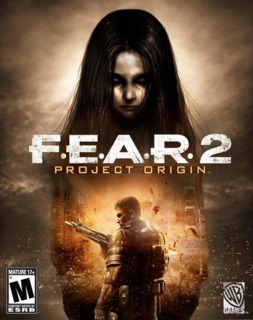While inevitably not as moving as the first, Monolith's F.E.A.R. 2 is still a thoroughly good and atmospheric shooter.
Now after two Sierra made expansions, and the purchasing of the F.E.A.R. name, Monolith rightfully had their creation back into their hands. Finally the true sequel to F.E.A.R. is here, and Project Origin is as fun and heavily atmospheric as ever. Now placing the player into a character with a real name and history, Project Origin dives deeper into Alma's past, and unravels any parts of the previous story that may have seem moot.
Inevitably, F.E.A.R. 2 does not have the same impact as its prequel. Such goes the fate of superb games such as Resident Evil 4, Red Alert, and possibly the future Metal Gear Solids. When the bar is set so high, it is difficult; perhaps too difficult to reach it once more. That said, Project Origin still offers intense action and brutal visuals to go with it.
One of the greatest complaints of the original F.E.A.R. by the general populace was the lack of environments. Monolith clearly showed interest in the forums, the environments are much larger in scope, and in greater variety. Alma's psychic powers have grown, and her ability is shown beautifully in the open streets. Terrifyingly, her rage and powers are so vast that it grips the skies. Players are thrown into the shoes of Michael Becket, a Delta Force operative who's storyline runs very close to Alma's indeed.
Project Origin takes place shortly before the events of the end of F.E.A.R. Point Man's whereabouts seemingly unknown, Beckett and his squad mates are sent to apprehend Genevieve Aristide, President of Armacham. Aristide re-opened Project Origin, in an attempt to profit off of its secrets. Michael Beckett soon learns of his involvement as a test subject in Project Harbinger, a program used to develop psychic leaders.
F.E.A.R. is best remembered for its horror themes, and brutal slow motion combat. Project Origin brings this mentality back to life. Enemies blasted away shoot arterial spray as Beckett makes Swiss cheese of them. And trademark "Boo!" sequences are heavily populated throughout the game. To accompany a new game, almost every weapon is new too; from the basic sub machine gun and the ACOG assault rifle to the Hammerhead and Type 12 Energy Weapon. Most are satisfying to shoot, but some of the greater weapons are sparsely used.
The weapons are fun, but the greatest enjoyment lies within using them in the iconic Slow-Mo. It's as satisfying as ever, and more vital in certain sticky spots in the campaign. Mech and/or turret sequences are always a good idea to mix up action in the campaign. Project Origin contains a couple of these sequences with a large and powerful Mech. Placed in a fairly destructible environment, the Mech will tear apart city blocks with ease. Yet, somehow these sequences are not as entertaining as one would think. It feels like a chore to get to one end from another.
Project Origins greatest weaknesses are placed in what differs from the first game. The greatest enjoyment of the original F.E.A.R. was attempting to outflank the opposition. The brilliant A.I. would throw everything they had at you, and would try to push players into weak spots. F.E.A.R. 2 employs a cover system. Players can knock over certain types of furniture or objects and use them as protective cover. But this is not a cover system where players can stick to the objects, like in Killzone or Gears of War. It seldom works well, and just detracts from the greatest parts of the game.
Multiplayer is unfortunately not one of the game's strengths. Although it is easily enjoyable, it feels lackluster in terms of options. The most notable absence is the lack of Slow-Mo modes, which made some epic firefights in reflex time matches. Without this, Project Origin's multiplayer feels like a filler. Standard modes are available; death matches and capture the flag, along with Failsafe, a mode similar to Counterstrike.
Throughout the campaign, players will get startled. Players of the original however, will likely feel the timings of the horror sequences to be predictable. The shootings has luckily stayed tried and true and remains great. First timers will have plenty of thrills and frills in Project Origins, but grizzled veterans may feel a longing for a more directly related sequel to one of the most atmospheric, brutal, and downright best shooters out there. F.E.A.R. 2: Project Origin may not step out of its prequel's shadows at the best of times, but it's a worthy shooter and is still one of the greatest horror genre games to experience.

